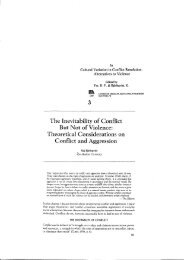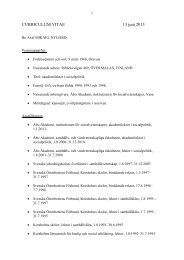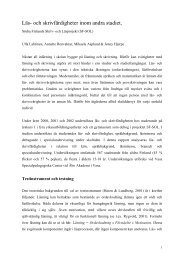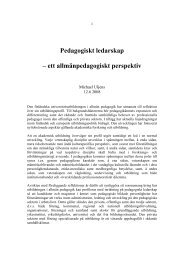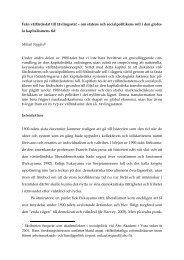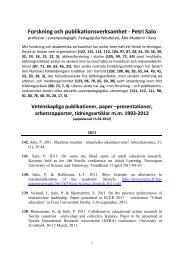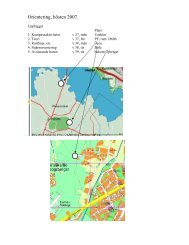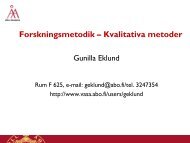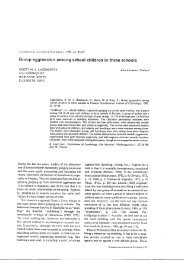Parties, Candidates and Citizens On-Line - Åbo Akademi
Parties, Candidates and Citizens On-Line - Åbo Akademi
Parties, Candidates and Citizens On-Line - Åbo Akademi
Create successful ePaper yourself
Turn your PDF publications into a flip-book with our unique Google optimized e-Paper software.
2001, 30; Pedersen & Saglie 2005, 362; Römmele 2003, 14; Smith 2002, 177). Catch-all<br />
<strong>and</strong> cartel parties would probably focus on top-down elements (Römmele 2003, 12).<br />
Arguably, the type of party organization <strong>and</strong> tradition can lay its mark on party<br />
activity on-line. It is, however, important to separate the models of party organization<br />
from the general party goals. Consequently, where Römmele (2003, 12) states that vote<br />
maximization can be brought together with the catch-all- <strong>and</strong> cartel-party models, I argue<br />
that such a view might be questionable. While most parties probably pursue vote<br />
maximization to some degree, especially catch-all parties, cartel-parties also focus on<br />
staying among those with power <strong>and</strong> keeping the status quo (Aarnio & Pekonen 1999, 192-<br />
196; Pekonen 1997). Consequently, office-maximization or maximization of policy<br />
influence is also part of the goals of a cartel-party. In sum, one type of party should be<br />
considered as pursuing several goals rather than linked to one specific goal (cf. Kitchelt<br />
2001, 276; Strom 1990, 570).<br />
Party size & resources<br />
In the research of party internet activity (e.g. Cunha et al. 2003; Gibson et al. 2003a;<br />
Gibson & Ward 2002; Margolis et al. 2003; Newell 2001), a significant amount of<br />
attention has been paid to explaining differences in party internet presence <strong>and</strong> website<br />
sophistication with differences in party size <strong>and</strong> associated resource strength (Gibson et<br />
al. 2003c, 80; Norris 2003). In the theories of equalization <strong>and</strong> normalization, scholars<br />
have put forward conceptual scenarios concerning the ability of fringe, <strong>and</strong> minor parties<br />
to compete with the major parties online – both in terms of presence <strong>and</strong> performance<br />
(Margolis & Resnick 2000; Margolis et al. 2003, 57-58). In brief, the equalization theory<br />
perceives campaigning on the web to increase the smaller parties’ chances of keeping up<br />
with their major counterparts. The normalization scenario paints an opposite picture. The<br />
major parties have both greater leverage in guiding voters to their sites <strong>and</strong> more<br />
resources to pour into constructing <strong>and</strong> maintaining sophisticated websites (Gibson et al.<br />
2003a, 50; Margolis et al. 2003, 57-58). Consequently, campaigning on the internet is<br />
unlikely to cause any widespread changes in party competition <strong>and</strong> power structures.<br />
However, even though resources may play a significant role in setting up <strong>and</strong><br />
maintaining a party website, the linkage to the type of online communication – in terms<br />
of top-down or bottom-up – carried out by a party is yet unclear (cf. Gibson et al. 2003b,<br />
80). Gibson et al. (2003c) noted that smaller parties place large expectations in the<br />
medium while major parties fair better in terms of web presence <strong>and</strong> website functionality<br />
<strong>and</strong> design. Party size appears to restrain what a party can afford to do on its website<br />
rather than determine what type of communication is preferred (cf. Gibson et al. 2003a, 50;<br />
Löfgren 2000, 60; Nixon et al. 2003, 240). Party size may also affect a party’s general view<br />
90



